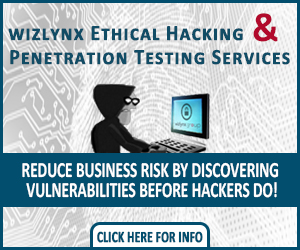
The Internet of Things, commonly known as IoT, has emerged as a transformative force. It brings convenience and efficiency to our daily lives. From smart thermostats that regulate our home’s temperature remotely to wearable fitness trackers that monitor our health, IoT devices have become integral to modern living. However, as a web-crawler’s father figure once said, “With great connectivity comes great responsibility.” The rise of IoT has ushered in a new era of vulnerabilities.
In this blog post, we will explore the growing threat landscape surrounding IoT devices, uncover their potential risks, and provide essential tips on how to safeguard your connected world.

The IoT Revolution
The IoT revolution has enabled us to seamlessly connect and control devices through the internet. This transformative technology has found its way into numerous industries and continues to expand. Healthcare, manufacturing, transportation, agriculture, and even smart cities! These devices enhance operational efficiency, improve patient care, optimize production processes, and create sustainable urban environments.
Understanding IoT Vulnerabilities
In the world of cybersecurity, professionals are divided into Red and Blue Teams. This concept is discussed in [possible link to Blog #18]. Similarly, in the world of IoT vulnerabilities, we can draw a parallel to a battleground. These vulnerabilities may take various forms, and malicious actors often exploit these security weaknesses. It’s crucial to address these vulnerabilities to ensure the security and integrity of IoT ecosystems.”
Key Security Issues in IoT:
- Weak Authentication: Many IoT devices ship with default usernames and passwords that are rarely changed by users. Attackers can perform brute force attack with password dictionary list to gain unauthorized access.
- Lack of Security Patches: IoT devices often lack regular firmware updates, leaving them vulnerable to known exploits. This is akin to not applying security patches, as discussed in a previous blog.
- Inadequate Encryption: Insufficient encryption of data transmitted between devices and servers can expose sensitive information to eavesdroppers.
- Data Privacy: Some IoT devices collect extensive data about users without their consent or knowledge, raising concerns about data privacy.
- Physical Security: IoT devices placed in public spaces can be physically tampered with, leading to potential security breaches.
Potential Consequences of IoT Vulnerabilities:
IoT vulnerabilities can jeopardize personal and sensitive information if not safeguarded correctly. Additionally, in some cases, they can even put lives at risk.
Consider the case of connected medical devices as an example. Imagine a scenario where cybercriminals gains unauthorized access to a patient’s insulin pump, altering the dosage without the patient’s knowledge. This breach not only endangers the individual’s life but also underscores the urgent need for robust IoT security measures.
Shifting gears to the autonomous vehicle industry, the stakes remain exceptionally high as well. An IoT vulnerability in an automated car’s control system could lead to catastrophic consequences. These incidents further underscore the critical importance of securing IoT devices and systems to ensure the safety and security of not only personal information but also human lives.
Top 10 Best Practices for IoT Device Security in an Enterprise Setting:
- Robust Authentication: Enforce strong, multi-factor authentication for accessing and managing IoT devices to prevent unauthorized access, especially in remote work settings.
- Firmware Update Policy: Establish a formal policy for firmware updates and patch management to address vulnerabilities promptly.
- Network Segmentation: Isolate IoT devices on separate VLANs to limit their interaction with critical systems.
- Network Monitoring: Deploy network monitoring tools and intrusion detection systems (IDS) tailored for IoT traffic to detect unusual or malicious activity.
- Encryption and Data Integrity: Ensure all data transmitted between IoT devices and servers is encrypted using strong protocols. Verify data integrity during transit and storage.
- Access Control Lists (ACLs): Implement access control lists to restrict communication between IoT devices, allowing only necessary traffic.
- Continuous Security Auditing: Regularly audit IoT device configurations and assess their security posture to identify and address vulnerabilities.
- User Training: Educate your employees about IoT security risks and best practices to promote responsible device use.
- Incident Response Plan: Develop a comprehensive incident response plan for IoT security incidents, defining roles and procedures for threat mitigation.
- Vendor Assessment: Assess vendor security practices before procuring IoT devices, and ensure they provide essential security features and support
Wizlynx’s Expertise in IoT Security
In our IoT era, it is vital you recognize the potential risks that come with it. Furthermore, understanding IoT vulnerabilities and taking proactive measures to protect your devices is essential. Additionally, with wizlynx group‘s IoT security expertise, you can navigate the complexities of the IoT world with confidence. You will know that your connected devices are better positioned against the rising tide of vulnerabilities.
Stay tuned for more information and practical advice on interesting cybersecurity topics in our upcoming articles. For further insights and articles on security, visit wizlynx group‘s News.




